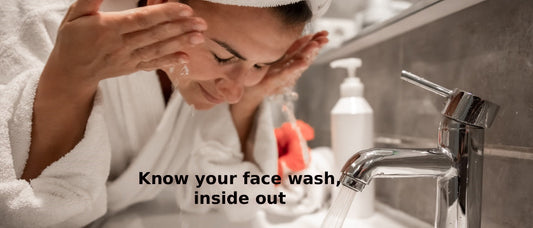
The Great Sunscreen Deception: Are You Protecting Your Skin or Just Fooling Yourself?
Share
Imagine this: You step out into the golden sunlight, your skin basking in the warmth. You’ve heard the warnings that UV rays are harmful, sunscreen is a must. So, like a responsible person, you slather it on, feeling invincible against the sun’s fiery gaze. But what if I told you that you might still be unprotected? That your trust in sunscreen might be misplaced? That the SPF number you rely on might not be the armor you think it is? That the SPF number you rely on might not be the armor you think it is?
Myth #1: Higher SPF Means Ultimate Protection
Have you ever bought an SPF 100 sunscreen thinking it’s twice as powerful as SPF 50? Surprise! The difference between them is minimal. SPF 50 blocks about 98% of UVB rays, while SPF 100 blocks around 99%. The illusion of greater protection often leads people to reapply less frequently, leaving their skin vulnerable. The real secret? Reapplication is king. No matter how high the SPF, if you don’t reapply every 2-3 hours, you’re inviting damage.
Myth #2: “I Don’t Need Sunscreen If It’s Cloudy or I’m Indoors”
Here’s a twist, UV rays are sneaky. Up to 80% of UV rays penetrate clouds, and they can bounce off surfaces like sand, water, and even glass. Sitting near a window? The UVA rays, responsible for aging and deep skin damage, are still reaching you. So, whether you’re at your desk or strolling on a cloudy day, your skin needs that shield.
Myth #3: Sunscreen Is Only for the Beach
Think sunscreen is just for beach vacations? That’s where we’ve been misled. Daily sun exposure while driving, running errands, or even sitting near windows adds up over time. The sun doesn’t take a break, and neither should your sun protection.
Myth #4: “I Have Dark Skin, So I Don’t Need Sunscreen”
This myth has fooled many. Melanin provides some natural protection, but it’s far from enough. While people with darker skin tones are less prone to sunburns, they are still at risk of long-term damage, hyperpigmentation, and even skin cancer. Sunscreen isn’t about fairness, it’s about skin health for everyone.
Myth #5: “All Sunscreens Feel Sticky and Leave a White Cast”
This was once true, but welcome to the future! Many sunscreens, like Lapin D'or’s Radiant Sun Protection SPF 50, are designed to be lightweight, non-greasy, and leave no white cast. They provide superior protection without the discomfort. So, no more excuses!
What If Sunscreen Irritates Your Skin?
Not all sunscreens suit everyone. If you experience irritation, redness, or breakouts, try these steps:
- Choose alcohol-free formulas to reduce the risk of irritation.
- Apply a lightweight, soothing moisturizer first, then layer sunscreen on top.
- Perform a patch test before using a new sunscreen on your face.
Should You Apply Sunscreen Over Moisturizer?
Yes! Your skincare routine should be in this order: cleanser → serum → moisturizer → sunscreen. Sunscreen is always the final step of skincare before makeup. Moisturizer helps keep the skin hydrated, while sunscreen acts as a barrier against UV damage.
The Grand Revelation: Sunscreen Is Your Skin’s Best Friend
Now that we’ve unraveled these myths, one truth remains that sunscreen is the most powerful anti-aging, anti-damage product you can use. But it only works if applied correctly every morning, reapplying throughout the day, and covering all exposed areas.
So, the next time you step out, don’t just assume you’re protected. Be smarter. Be proactive. And let your skin thank you years down the line.
Are you ready to break free from the sunscreen deception? Your skin’s future depends on it.



